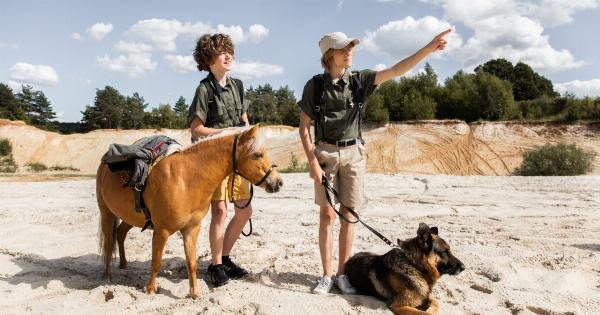A double dog dare is a challenge or dare taken to the extreme. It goes beyond the typical dare and carries a greater level of consequence if not completed.
The phrase “double dog dare” is often used to add emphasis to a daring challenge, indicating that it cannot be ignored or refused without facing social repercussions.
Origin of the Double Dog Dare
The exact origin of the double dog dare is unclear, but it is believed to have emerged in American culture during the early 20th century. It gained popularity through its use in various forms of media, including books, movies, and television shows.
Triple Dog Dare: Taking it a Step Further
For those seeking an even greater challenge, there is the triple dog dare. This dare carries even higher stakes than the double dog dare and is often seen as the ultimate test of courage and bravery.
While the double dog dare is serious in its own right, the triple dog dare takes it to another level.
Double Dog Dares in Popular Culture
The double dog dare has become a well-known trope in popular culture, particularly in movies and television shows. It is often used to depict a character daring another character to do something outrageous or risky.
The dare is typically met with a mixture of fear, excitement, and hesitation.
The Power of Peer Pressure
Double dog dares are often fueled by peer pressure. The fear of being seen as weak or cowardly can push individuals to take on challenges they may not have otherwise considered.
The desire to fit in and prove oneself can be a strong motivator, leading people to engage in daring acts they might otherwise avoid.
The Consequences of Ignoring a Double Dog Dare
Ignoring a double dog dare can result in various consequences, depending on the social context and the individuals involved. In some cases, the consequence may simply be social embarrassment or teasing.
However, in other instances, the consequence may be more severe, such as being excluded from a group or facing a loss of social status.
Risk and Reward in Double Dog Dares
Double dog dares often blur the line between risk and reward. While there is a thrill associated with completing a daring challenge and gaining the admiration of peers, there is also the potential for harm or negative consequences.
Individuals must carefully consider the risks and rewards before accepting a double dog dare.
The Psychology of Daring Challenges
Psychologically, daring challenges like the double dog dare can tap into our need for excitement and adventure. The adrenaline rush that comes from taking risks can be exhilarating and addictive.
However, it is important to balance these urges with rational thinking and consideration for one’s own safety and well-being.
Teaching Children about Boundaries
Double dog dares are often associated with childhood and the formative years of social development.
While it is important for children to explore their limits and take risks, it is equally essential for parents and educators to teach them about boundaries and the potential consequences of their actions. Encouraging open communication and critical thinking can help children navigate the peer pressure associated with dares.
Increasing Awareness on the Dangers of Extreme Dares
While double dog dares can be seen as harmless fun in some cases, it is crucial to raise awareness about the dangers of extreme dares. Engaging in risky behavior without proper precautions can lead to serious injuries or even fatalities.
By highlighting the potential risks associated with dares, we can help promote a culture of responsible decision-making.
Conclusion
A double dog dare may seem like a simple challenge, but it represents the power of peer pressure and the blurred lines between risk and reward. Understanding the consequences and making informed decisions is key when faced with daring challenges.
By promoting open dialogue and responsible decision-making, we can ensure the safety and well-being of individuals in our society.































